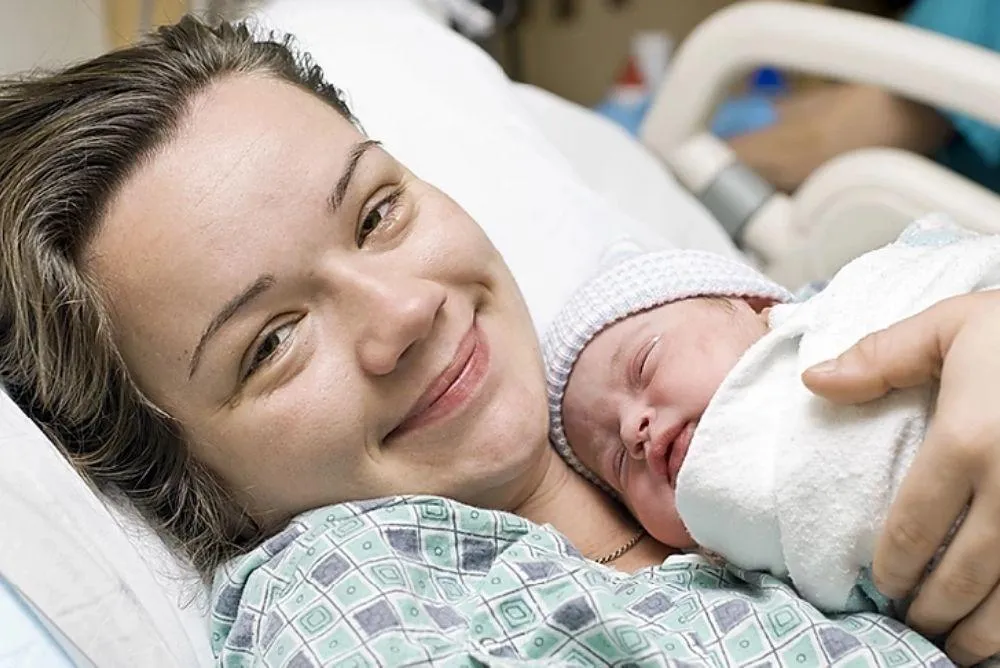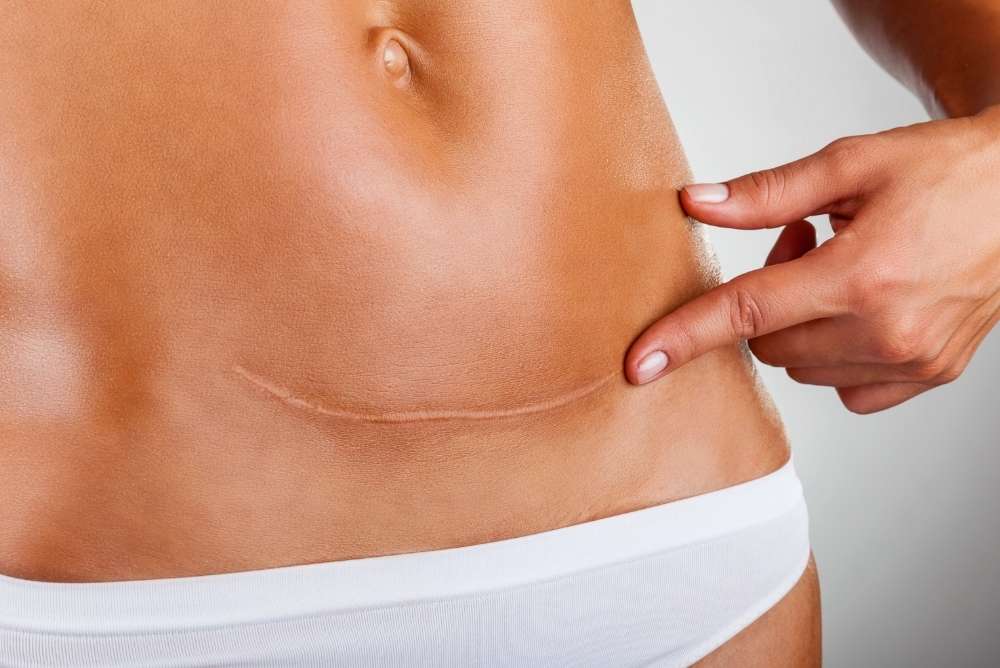
C-Section Scar Tissue Therapy
Whether you are a first-time mum or experienced it all before. All mums have countless concerns about having a baby. If you’re having a planned caesarean section, also known as a C-section, the prospect of having surgery AND a baby at the same time can be overwhelming. Don’t Panic! You are in good company. 1 in 3 women in Australia have C-sections and welcome healthy babies every day.

A Guarantee of a C-Section is a scar.
Medical science has improved and along with it better methods are now used to reduce internal scar tissue adhesions. Modern C-Sections nearly all use the Pfannenstiel incision (horizontal just above the pubic bone). Generally, no abdominal muscle tissue is cut instead the surrounding fascia is and a method termed blunt entry is used. (The fascia gives the muscle its shape.) The incisions made are to the fascial walls of the abdominal cavity and finally to the Uterus to bring your baby into the world!

Thinking of your scar like an iceberg – what you see on the surface is not the whole story.
There is much that can be done to improve the health of the tissue surrounding the scar and the scar itself with a massage. Understanding why you should massage your scar it is important to comprehend a little bit more about scar tissue itself.
Scar tissue is a fibrous tissue mostly made of collagen which means it is really strong and inelastic. It is sticky stuff and ‘sticks’ the incision back together. The trouble is, scar tissue is indiscriminate about what it adheres to, it adheres to skin, muscle, and connective tissue also known as fascia.
So what does that mean for you?
It means that scar tissue can pull on all the surrounding soft tissues three-dimensionally, making these areas taut and tight. Thereby reducing the healthy blood flow, lymphatic flow to the scarred area. The reason is that the tissue in that area does not receive as much oxygen, nutrients and has a reduced ability to deal with the metabolic waste. This reduction can affect the nerves and fascia, consequently irritating them and altering their function, and giving sensations of pain or numbness.
Scar tissue can also be the cause of referred pain. This can be experienced quite far from the sight of the incision, and often the scars evolvement is overlooked. The referred pain can be caused by myofascial trigger points, nerves, and/or functional compensations in movement, resulting in a myriad of problems such as chronic pain, loss of sensation, increase in sensitivity, numbness, disruption to organ function, and/or itchiness. I have a particular interest in the commonly ignored or minimised global effects to the scar owner, the wider effects on their lives and those they love. Scars really are like icebergs!
For recovering and reducing complications with scar tissue adhesions, it is recommended that scar tissue therapy has to be performed once the visible scar has healed. You will know it has healed once it no longer has a scab.
There should be no heat, swelling, bleeding, or other fluids coming from the scar, if there is go back to your doctor.
All the scar therapy is done with a light touch and no ointments. If there is any pain, stop what you are doing. It can be helpful to do the massage whilst looking in a mirror.
Get to know your scar with some massage!

Look at your scar – what do you think?
Gently touch your scar. Use the same pressure as you would use when touching your eyelid.
Are there any areas that feel more or less sensitive than others?
Are there any areas that feel hard or soft?
How well does your scar move?
It is good to test how flexible the scar is and get to know how it moves.
1-) Place one finger at each end of your scar. Keep one hand still and let the other hand gently explore, how it feels to move your scar in the directions of a compass. North, South, East, and West. Are any of the directions easier than others?
2-) Revisit the directions that do not move as easily and hold then, wait for a minute or two, they may give a little and you might feel a subtle movement.
3-) Repeat this, holding the other end of the scar still. Using your fingertips with the eyelid level of pressure, gentle stroke in towards the incision from above and below the scar itself. Notice the texture of the surface skin. Is it smooth or bumpy?
4-) Then place fingers pads on the scar and gently brighten your awareness to underneath the scar your finger pads will very gently and slowly begin to sink in a little until to feel a hard ropey area.
Be patient I invite you to explore the ‘landscape’ of the underneath ‘hardened’ area and keep your fingers soft, think about holding a baby bird. You can choose an area to stay and still let the finger pads connect deeply. Waiting and you might notice a softening happen.
DO NOT – EVEN IF YOU HAVE AN OLD SCAR
Do not rub your scar vigorously – this will cause more ropey scar tissue to form.
Do not use circular motions all around your scar that information is out of date.
Do not try to break up scar tissue – it is not possible – it is a bodywork myth.
Scar Tissue Therapy is a safe way to improve the appearance of your scar and the surrounding tissue – a common issue is the appearance of a ‘shelf’ below the scar. Fascial work greatly improves this and it is something you can learn to do for yourself.
Specific work for this area is done after the 6-8 week check-up as this is when the internal uterine scar has healed.
I have experience in working with many types of Abdominal Scars. Some scars have more than 30 years on from the time of incision and some of them are new scars of 8 weeks old. In all cases, there has been visual improvement and emotional and physical change for the better after the massage. Results are surprisingly quick.
I like to involve clients in their Scar tissue Therapy.
By teaching them how they can reconnect with their bodies and be in control of their treatment.
Scar tissue massage should NEVER be painful and the results are quick. Scar tissue massage can be used anywhere on the body and can give far-reaching benefits. So if you are having trouble with backache, period pain, urinary tract infections, incontinence, bowel issues, or experience pain during sex and you have an abdominal scar or pelvic scar of any age. It might be worth exploring what Scar therapy or a trained Scar Therapist can do for you.
If you are looking for a Scar Therapist, CKMassage Training runs the longest and most comprehensive online scar course available in Australia. If you look at our Therapists directory, you will find the top percent of Scar Therapists listed there.
If you are a therapist and you would like to improve your skills, there is more information here.







